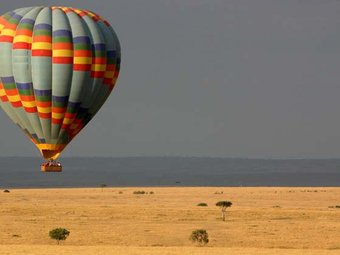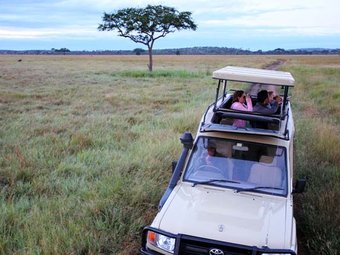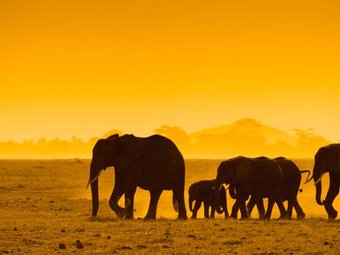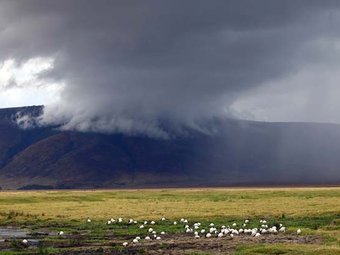Maasai Mara Safari
10 days—Big Cats of the Maasai Mara Safari
$8000-12000 USD
pp
Safari summary
Wildlife Viewing In Kenya: Lake Nakuru National Park, Maasai Mara Game Reserve
Types of Transportation: Land Cruiser, Bush Plane
Active Options Included: Bird Watching
Additional Active Options Available: Ballooning
Cultural Experiences Available: Sheldrick Animal Orphanage, BEADS for Education
About this tour
| Tour type | Custom, tailor-made, private | |
| Main focus | Game drives | |
| Activity level | Easy activity | |
| Best months | January, February, March, July, August, September, October | |
| Countries | ||
| Parks |
Fine details
Safari highlights
- Cultural visits—orphanages, markets, schools
- Night game drives
Itinerary
Day 1
Day 1 Travel day International flight
Day 2
Day 2 Ole Sereni Nairobi Pickup at Jomo Kenyatta Airport by Deeper Africa guide after clearing customs. He will have a sign with your name on it. Your guide will transport you to Ole Sereni for an evening dinner and overnight. Overnight at Ole Sereni. Swimming pool available.
Day 3
Lake Nakuru
Day 3 Mbweha Camp Lake Nakuru National Park Breakfast at Ole Sereni. Begin the drive out after breakfast for Lake Nakuru National Park. Arrive at Mbweha Camp about lunch time, with check-in and time for lunch. Afternoon wildlife viewing in Lake Nakuru National Park. While wildlife viewing you’ll have a cool box in your Land Cruiser stocked with water and your favorite sodas. Your next seven days will provide you with in-depth opportunities to learn animal identification, wildlife tracking, and wildlife spotting in the East African landscape in the company of your Deeper Africa naturalist. You’ll begin your Natural Learning program focusing first on animal identification and learning to distinguish animal species. As well, your guide will begin to introduce you to conservation issues including human wildlife conflicts, poaching controls and conflicts, and community involvement in wildlife conservation. Nakuru is a small, beautiful park with ecosystems that include an acacia forest, woodlands, and a famous soda lake that draws flocks of greater and lesser flamingos and over 4oo species of birds, including many white pelicans. Up to four million flamingoes roam the Rift Valley lakes in great flocks throughout the year, searching for the best feeding and bathing conditions. Each day a substantial number of these flamingoes settle on Lake Nakuru producing a fascinating fusion of sights and sounds. Nakuru is full of wildlife and you have the opportunity for sightings of giraffe, rhino, buffalo, zebra, and many antelope species including waterbuck, eland, reedbuck, dik dik, impala, Thompson and Grant gazelles, as well as numerous warthogs. Dinner and overnight at Mbweha Camp.
Day 4
Lake Nakuru
Day 4 Mbweha Camp Lake Nakuru National Park Breakfast at Mbweha Camp. Set your wildlife viewing schedule with your guide. Picnic lunch in the park. In the 1990’s a number of species were introduced into this park by Kenyan Wildlife Service (“KWS”). Both black rhino and white rhino were relocated into the park and their populations continue to grow steadily. The Rothschild’s giraffe herd now numbers between 60 and 70 members. With only a small population of lions and leopards to check population growth, the antelope populations are large and well habituated. There are no elephants in Nakuru. Historically, Nakuru was a remote wildlife park, but development and urban sprawl have brought many people to this remote area. Human and wildlife conflicts were a constant problem. As a solution Kenya Wildlife Service built an electric fence around this small park. Funds for the fence were provided by the World Wide Fund for Nature for the purpose of maintaining a large population of rhino in one well-protected zone, secure from poachers. Security costs per year for this rhino sanctuary top $7,500(US) per rhino. The fence solved the conflict problems and it allows you the opportunity for viewing wildlife in this small geographic area. Lunch, dinner, and overnight at Mbweha Camp.
Day 5
Serengeti
Day 5 Mara Intrepids Camp Maasai Mara Game Reserve Breakfast at Mbweha Camp. Morning drive westward into the Maasai Narok District. As you drive west, you will see the landscape change to drier savannah grasslands and begin to note many herds of cattle tended by local Maasai herdsmen. Today is a longer drive with a picnic lunch along the way. You’ll begin wildlife viewing as soon as you enter the Mara, traveling the distance to Mara Intrepids Camp. You’ll arrive in the late afternoon for sundowners (drinks at sundown) and a luscious dinner. The Maasai Mara is the northern section of the Serengeti ecosystem. This vast savannah grassland extends south for over five thousand square miles into Tanzania, forming one of the world’s largest wildlife refuges. This land is as it was in the beginning: no fences, no settlements, just a perennial migration of wildlife. In a journey that reaches back through time, these herds of animals (currently estimated at 1.25 million) follow the seasonal rains traveling from the Serengeti into the Mara instinctually moving with the seasonal rainfalls, sometimes migrating as much as 300 miles a year. Wildlife is allowed to roam freely across the Kenyan and Tanzanian borders, uniting the two parks into a single ecological unit that supports the largest concentration of large mammals on the planet. You’ll have daily wildlife viewing from 6:00 am to 6:00 pm with the flexibility to schedule each day as you choose with your guide. A wide array of habitats is represented in the Mara, each with a unique complement of flora and fauna. The variety of ecosystems makes the Mara superb place to hone your tracking and spotting skills - allowing you continued opportunities to increase your wildlife knowledge. Acacia woodlands attract giraffes, while hippos occupy the deeper river pools. The eastern and western Mara, as well as the Mara River, are all accessible to you by Land Cruiser. Dinner and overnight at Mara Intrepids Camp.
Day 6
Serengeti
Day 6 Mara Intrepids Camp Maasai Mara Game Reserve Breakfast at Mara Intrepids Camp. Wildlife viewing from 6:00 am to 6:00 pm as you schedule with your guide. Picnic lunches are always available. The annual migration is what makes the Mara famous. The herds gather in the hundreds of thousands on the plains of the Mara during July, August, September, October, and into November. The herds are drawn into the northern Serengeti region by areas of greater rainfall because the grasses grow taller and stay greener longer. The migration includes vast herds of wildebeest, but also zebra and Thomson’s gazelle. Those herds remain in the Mara for up to four months - chomping and trampling the grass, grunting, and stampeding across the Mara River in search of fresh grass for grazing. The onset of the “short rains” sometime in November or early December sends the herds south into the Serengeti for fresh grass. Wildebeest are well-suited to harvest the short grasses that cover the semiarid plains of the Serengeti. The soils of this region have an underlying hardpan covered by a fertile layer of volcanic soil. Grass growing in this soil is highly nutritious taking up nutrients trapped by the hard pan. It is the superabundance of prey that accounts for the Mara’s big predator populations. At last count there were 22 lion prides in the Mara. Femaleswithin a lion pride are related to each other. Daughters, mothers, grandmothers, aunts, and nieces live together for up to 15 years - the typical lifespan of a lioness. Males are forced to leave the pride at between two to three years of age. When not attached to a pride, lions are nomadic, occasionally banding together with other male cousins or brothers. The majority of prides in the Mara have two or three adult males, but the males in power can form larger alliances. Nomadic males are a constant territorial threat to the pride males. Dinner and overnight at Mara Intrepids Camp.
Day 7
Day 7 Mara Intrepids Camp Maasai Mara Game Reserve Breakfast at Mara Intrepids Camp. Set your wildlife viewing schedule with your guide. Mara Intrepids is located in a large wedge of rolling savannah between the Talek and Ntiakitak Rivers. The rivers make it difficult to access from the west, hence, more private wilderness and wildlife for you. The resident lion pride in the area is known as the Ol Kiombo pride, and they are very active. You will have a good chance of sightings. Dusk and dawn are particularly good times for lion hunting. Darkness favors the nocturnal eyes of the predators and the advantages to grouping with other animals in a herd diminishes. Leopards favor the thickets near Leopard Gorge and Fig Tree Ridge. Ask your guide about the better pride viewing opportunities for your safari season. He will also consider taking you near Musiara Marsh, near the Governors Camp area of the Mara, which is prime territory for the Marsh lion pride. Other pride territories are near Rhino Ridge, near Paradise Plain, and near Kichwa Tembo. Each of these pride territories vary in size. The controlling factors tend to be habitat and the availability of food. Some Mara prides can do quite well with small amounts of territory, while other prides require substantially larger amounts of ground. While pride members defend their territories they can never keep an exclusive lock on all of their territory. Overlaps at the edges of the territories find young nomadic males creating confrontations whenever possible. During migration season, the lions prosper with sufficient food to feed all of the pride members. But once the herds migrate south into Tanzania, the resident wildlife becomes the prime target. Territory and hunting skills become the means of survival. Dinner and overnight at Mara Intrepids Camp.
Day 8
Serengeti
Day 8 Mara Intrepids Camp Maasai Mara Game Reserve Breakfast at Mara Intrepids Camp. While on safari you’ll have the opportunity to observe human wildlife conflicts and to study some of the greatest challenges facing the stability of the Serengeti migratory herds. In most other areas of Africa, major wildebeest herds have died out due to ever-expanding human populations which demand water resources as well as land for agriculture and domestic livestock. Humans’ need for land at the edges of the Mara and their need for water resources threaten to reduce both the migration range and access to water resources. It is land available for grazing and access to water that determine the size of the Serengeti wildebeest population. The herd’s population varies yearly depending on rainfall and availability of grassland. When there is not enough food or water, the weakest members of the population starve. In the absence of severe drought, most of the culling will occur late in the dry season, just before the “short rains” begin. The Mara savannahs with their open country and grasslands support a healthy cheetah population. Cheetahs face increasing pressure from humans and land encroachment, with between 9,000 to 12,000 left in the world. You’ll be scouting for cheetah in one of the two remaining cheetah strongholds in theworld: the Mara/Serengeti ecosystem. (The other significant cheetah population is in Namibia and Botswana.) The Mara cheetah population is threatened by a lack of genetic variation, making them susceptible to disease and decreasing reproduction. Still there have been a number of cub births in the Mara cheetah population over the past five years. Cheetahs live in small groups or singly, not in prides. The famous BBC documentary “Big Cats Diary” has filmed quite a number of Mara cheetah mothers with their cubs in the past few seasons. Look carefully around the termite mounds as they are popular hiding places for the Mara cheetahs. Dinner and overnight at Mara Intrepids Camp.
Day 9
Nairobi
Day 9 Nairobi Breakfast at Mara Intrepids Camp. Morning for wildlife viewing. Your guide will have your plane ticket for you. He will make sure you are checked in and that your luggage is loaded on your bush plane. Say goodbye to your Deeper Africa guide at the airstrip, as he needs to drive the Land Cruiser back to Nairobi. Bush Flight Departs Mara bush strip @ approximately 11:00 am Arrives Nairobi Wilson @ approximately 12:15 pm Pickup by Deeper Africa guide and transfer to a relaxing dinner at one of Nairobi’s restaurants. We’ll pick the best place together. Depart the restaurant with your Deeper Africa guide for evening transport to Jomo Kenyatta International Airport for your international flight.
Day 10
Day 10 Travel day International flight 5
Here are the latest tours by Deeper Africa.
Gems of Tanzania Safari
Tour by: Deeper Africa
Countries:

Focus: Game drives
Tanzania Southern Circuit
Tour by: Deeper Africa
Countries:

Focus: Game drives
Elephant Walk Safari
Tour by: Deeper Africa
Countries:

Focus: Game drives
Wild Tanzania Safari
Tour by: Deeper Africa
Countries:

Focus: Game drives
Cleanliness of vehicle
Meet and greet team
Quality of itinerary
Responsiveness of staff




